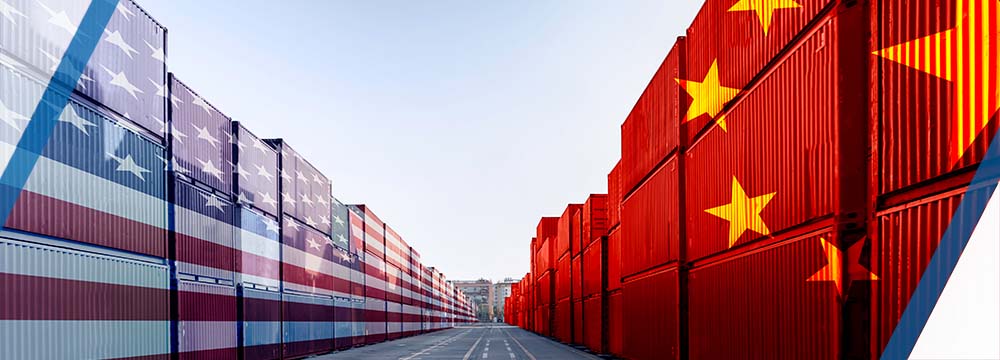USTR Announces Process for Reinstating Certain Section 301 China Tariff Product Exclusions
October 12, 2021 – Articles
The United States Trade Representative (USTR) announced a period for public comment on whether Section 301 product exclusions should be reinstated for certain Chinese-origin goods. The product exclusions eligible for potential reinstatement are the relatively small subset of exclusions for which the USTR had both previously granted an exclusion and an extension of the exclusion. This reinstatement application process is separate from the process by which the USTR is considering whether to extend COVID-related exclusions. The USTR notice about this new process was published in the Federal Register on Oct. 8, 2021, 86 FR 56345.
Section 301 Background
The U.S. has imposed tariffs on goods imported from China pursuant to Section 301 of the Trade Act of 1974 since July 2018. The USTR imposed Section 301 tariffs following the USTR’s investigation and determination that China’s acts, policies, and practices regarding technology transfer, intellectual property, and innovation were unreasonable and discriminatory and burdened or restricted U.S. commerce. The USTR imposed the Section 301 tariffs in four rounds issued as “Lists” on the approximately $550 billion of goods imported from China annually. After imposing Section 301 tariffs on a given List of goods in 2018 and 2019, the USTR followed with an exclusion request process by which applicants applied for exemptions from the Section 301 tariffs and the USTR granted certain exclusions. See the chart below for a summary of the Section 301 tariff rates imposed to date for Lists 1 to 4.
Starting in 2020, the USTR also instituted processes by which applicants could apply to have granted exclusions extended beyond the original date of expiration. The USTR granted extensions for a subset of the exclusions it had originally granted, ultimately extending a total of 549 exclusions across Lists 1 to 4a that expired either by Dec. 31, 2020, or in the spring of 2021. Only these 549 expired exclusions are currently eligible for consideration through this reinstatement application process. See the chart below for the number of eligible exclusions by List and see the USTR’s list of each of the 549 previously extended exclusions here.
Notably, this reinstatement process does not pertain to previously granted exclusions that were never granted an extension, previously denied exclusion requests, or to new exclusion requests. The United States Trade Representative Ambassador Katherine Tai’s speech of Oct. 4, 2021, outlining the new Administration’s U.S.-China trade policy alluded to this exclusion reinstatement process stating, “we will start a targeted tariff exclusion process. We will ensure that the existing enforcement structure optimally serves our economic interests. We will keep open the potential for additional exclusion processes as warranted.” It is unclear whether Ambassador Tai was indicating that further exclusion reinstatement processes would be forthcoming. The text of Ambassador Tai’s speech is available here.
In 2020, the USTR also supplemented the above-mentioned exclusion request processes by instituting an additional exclusion request process for goods imported from China that were needed to combat the COVID-19 pandemic. The COVID-related exclusions the USTR granted are still in place. They were to be valid through Sept. 30, 2021, but the USTR granted an interim extension through Nov. 14, 2021, to give itself additional time to evaluate the public comments it received about extending the COVID-related exclusions that were due by Sept. 27, 2021.
Details about the Exclusion Reinstatement Process
The USTR will begin accepting comments on whether, and for what period of time, to reinstate exclusions on Oct. 12, 2021, via its online web portal, https://comments.USTR.gov, and the submission deadline is Dec. 1, 2021. Submissions may be in support or oppose the reinstatement of a particular exclusion regardless of who secured the original exclusion or exclusion extension. As with previous exclusion request processes, the USTR has provided a template with the information required and to be considered.
The USTR will evaluate, on a case-by-case basis, the possible reinstatement of each exclusion. A critical factor for the USTR’s evaluation is whether a particular product remains available only from China despite Section 301 tariffs having been in place. The USTR asks submissions to address specifically the following with respect to this factor:
(1) Whether a particular product and/or a comparable product is available from sources in the United States and/or in third countries;
(2) Any changes in the global supply chain since September 2018 with respect to a particular product or any other relevant industry developments;
(3) The efforts, if any, the importers or U.S. purchasers have undertaken since September 2018 to source a product from the United States or third countries; and
(4) Domestic capacity for producing a product in the United States.
The USTR also will consider whether there will be severe economic harm to the commenter from continued Section 301 tariffs and how other U.S. interests will be impacted such as small businesses, employment, manufacturing output, critical supply chains, and the goal of eliminating China’s bad acts, policies, and practices regarding technology transfer, intellectual property, and innovation.
The chart below summarizes the Section 301 tariffs imposed to date and the number of tariff subheadings eligible to be reinstated by List.
Tariff List–Value of Imports from China |
Number of Tariff Subheadings on List* |
No. of Tariff Subheadings Eligible for Reinstatement Process* |
Date Tariff Levied |
Tariff |
|---|---|---|---|---|
List 1 – $34B |
818 |
137 |
7/6/2018 |
25% |
|
|
|||
List 2 - $16B |
279 |
59 |
8/23/2018 |
25% |
|
|
|||
List 3 – $200B |
5,733 |
266 |
9/24/2018 |
10% |
|
25% |
|||
|
|
|||
Lists 4A** |
3,805 |
87 |
9/1/2019 (List A) |
|
2/14/2020 |
7.5% |
|||
Lists 4B** |
12/15/2019 (List 4B) (postponed) |
|
||
Note: A crossed-out tariff rate indicates it did not take effect. The current tariff rate is in bold font. |
Dinsmore & Shohl LLP continues to work with its clients to evaluate options and develop strategies to mitigate the effects of Section 301 tariffs in trade with China. This work includes reviewing tariff classifications on the Harmonized Tariff Schedule, reviewing the country of origin of imported products, evaluating potential changes to product supply chains, and now preparing product exclusion reinstatement requests. For more information, contact Ivan W. Bilaniuk or your Dinsmore attorney.

